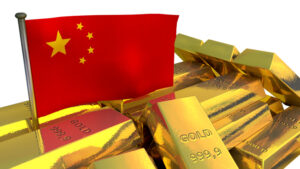
China’s Gold Reserves Surge to Record Highs
The comments below are an edited and abridged synopsis of an article by Jan Nieuwenhuijs, Money Metals News Service
As global markets face mounting uncertainty, central banks—especially in the East—are increasing their gold reserves at an unprecedented pace. The People’s Bank of China (PBoC) stands out, reportedly purchasing far more gold than officially disclosed. While 2024 figures show a formal acquisition of 570 tonnes, analysts and insiders estimate China’s true holdings exceed 5,000 tonnes, nearly double its official declarations.
This discrepancy arises from a comparison of data by the World Gold Council (WGC) and the International Monetary Fund (IMF), revealing consistent unreported purchases since the Ukraine conflict began. Sources within the bullion trade, combined with surpluses in China’s gold market and unusual trade patterns (like bulk gold shipments from London to Beijing), all point to systematic accumulation by the PBoC.
Such covert buying signals more than just reserve diversification—it reflects a broader strategic pivot. China and several Eastern nations are working toward non-dollar settlement mechanisms, including digital platforms like mBridge and potential gold-backed stablecoins. These moves not only enhance monetary independence but also elevate gold’s role in a shifting global financial order.
By the end of 2024, world official gold reserves reached an all-time high of 39,547 tonnes, with non-Western central banks now holding 45% of global totals. Gold’s share of international reserves surged by 4%, the largest jump in four decades, underscoring the trend toward de-dollarization.
For investors, these developments offer compelling evidence that gold is not just a commodity—but a core strategic asset. As the East increasingly adopts gold to anchor financial security, the West must reconsider gold’s significance in both policy and portfolio strategy.

